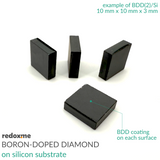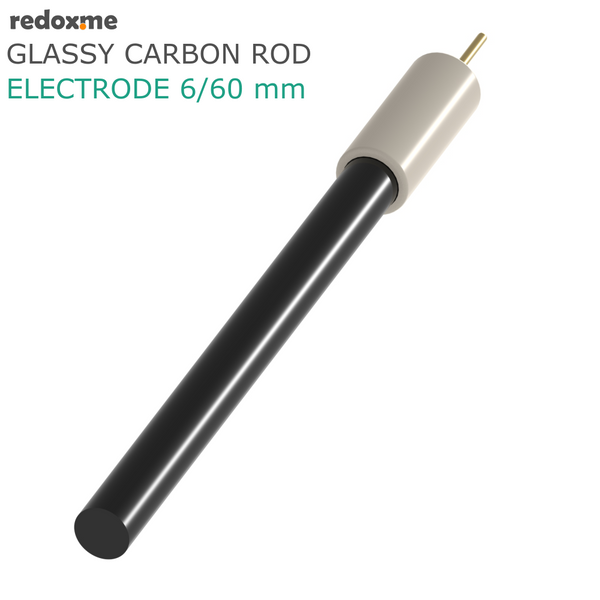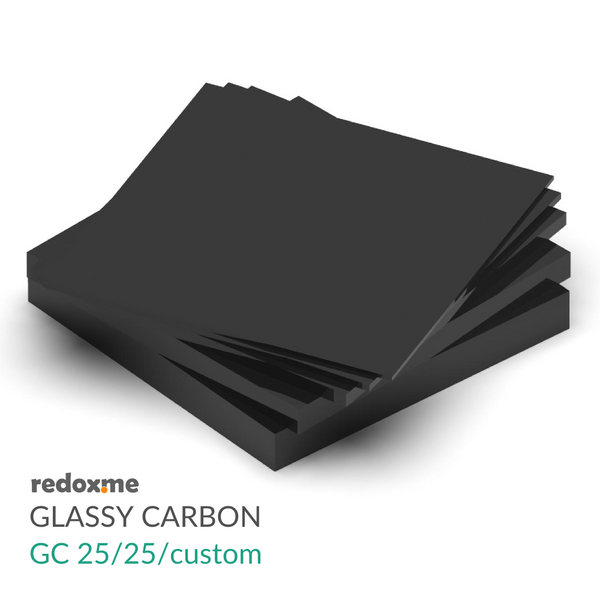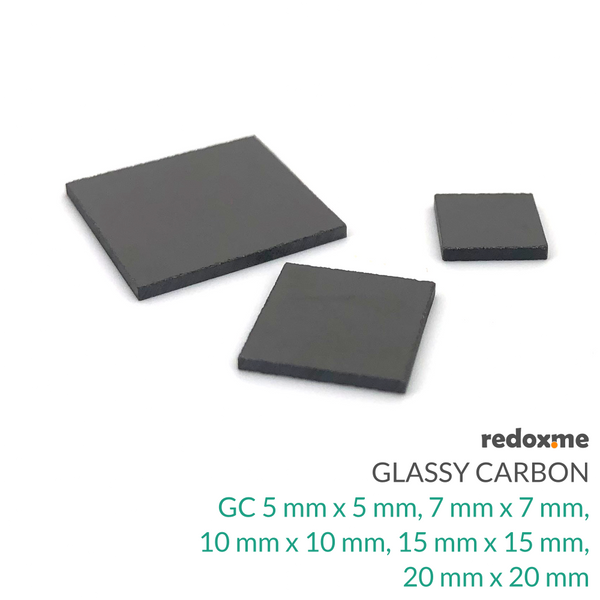Boron-Doped Diamond on Silicon Substrate
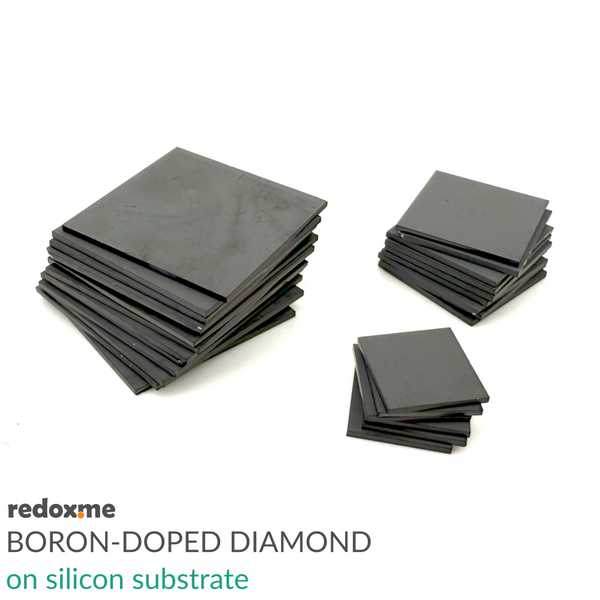
A Boron-Doped Diamond (BDD) on Silicon Substrate (Si) is a high-performance material that combines the excellent properties of diamond with the versatility of silicon. The substrate consists of a conductive silicon wafer that is coated with a thin layer of boron-doped diamond. Boron doping introduces p-type conductivity to the diamond layer, enhancing its electrical properties and making it suitable for use in electrochemical applications.
This material offers a unique combination of attributes, including the high thermal conductivity, electrical conductivity, and hardness of diamond, along with the well-established compatibility and cost-effectiveness of silicon. Therefore, this product is a more affordable alternative to polycrystalline Boron-Doped Diamond Plate. The boron doping further improves the substrate's ability to support electrochemical reactions, offering efficient charge transport and heat dissipation.
A BDD on Si substrate electrode comes in two main types. The first type BDD(2)/Si is denoted as an electrode where all the surfaces of the silicon substrate are coated with BDD. In the second variant, BDD(1)/Si, only the front surface and the sides of the wafer are coated with BDD. This is important depending on the electrochemical cell you are using. If it is a bottom mount electrochemical cell type or a sample holder, where only one surface of the electrode is exposed to the electrolyte, the BDD(1)/Si will be well-suited for both types of electrical connections: front contact and back contact (as a reminder, the silicon wafer used is conductive). However, if you plan to immerse the entire electrode in the electrolyte, for example, using such a basic sample holder, it is recommended to use a silicon substrate coated with BDD on all sides, which is BDD(2)/Si.
Application note
Properties of BDD are particularly important in electroanalysis for the development of sensors and biosensors. BDD electrodes allow to detect many electroactive molecules in aqueous media that would otherwise be masked by water decomposition reactions at higher potentials. The surface of BDD electrode can be further (photo)functionalized or decorated. In order to enhance the electrochemical response in a presence of organic molecules, the surface of BDD can be also modified with metal nanoparticles (e.g. Au). BDD is also a broadly used electrode material for electrochemical energy storage, electrocatalysis or electrosynthesis.
Please note that this product differs slightly in electrochemical properties from the polycrystalline Boron-Doped Diamond Plate. However, in most applications, using this product as a more affordable alternative is fully justified.
Specification
thickness tolerance: <10%
oxygen evolution potential in 0.5M H₂SO₄: 2.3 V
hydrogen evolution potential in 0.5M H₂SO₄: -0.8 V
background current: 12 µA/cm2
measured B doping range: 1-5·1020 cm3
measured resistivity: 37 ohm·cm
BDD layer thickness: 8 µm
grain size: 7 µm
recommended long-time current density: <80 mA/cm2
electrochemically active area: 1.8 cm2/cm2
pH range: 1-13
Intrastat data
HS Code: 85414290
Country of Origin: Sweden
NET weight: 100 g
Product includes
1 x BDD on Si substrate electrode
Related products
BMM EC 15mm x 15mm - Bottom Magnetic Mount Electrochemical Cell
BM EC 15mm x 15mm - Bottom Mount Electrochemical Cell
BMM EC 7mm x 7mm - Bottom Magnetic Mount Electrochemical Cell
BM EC 7mm x 7mm - Bottom Mount Electrochemical Cell
sample holder 25 mm x 25 mm
sample holder 15 mm x 15 mm
basic sample holder
adjastuble dual-electrode holder



